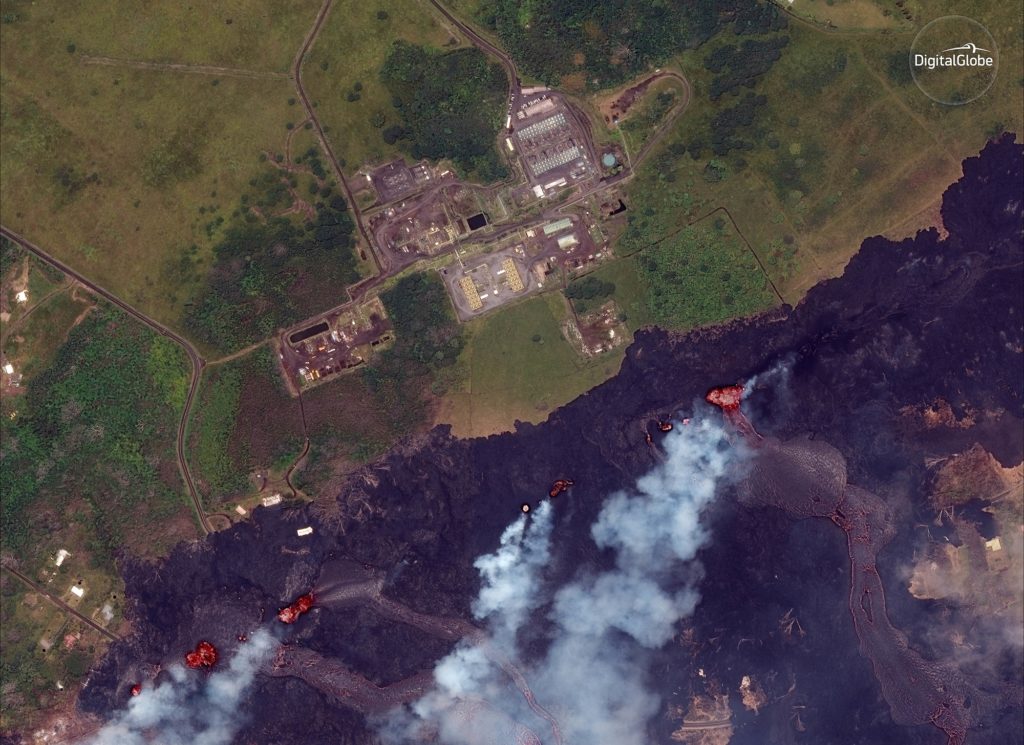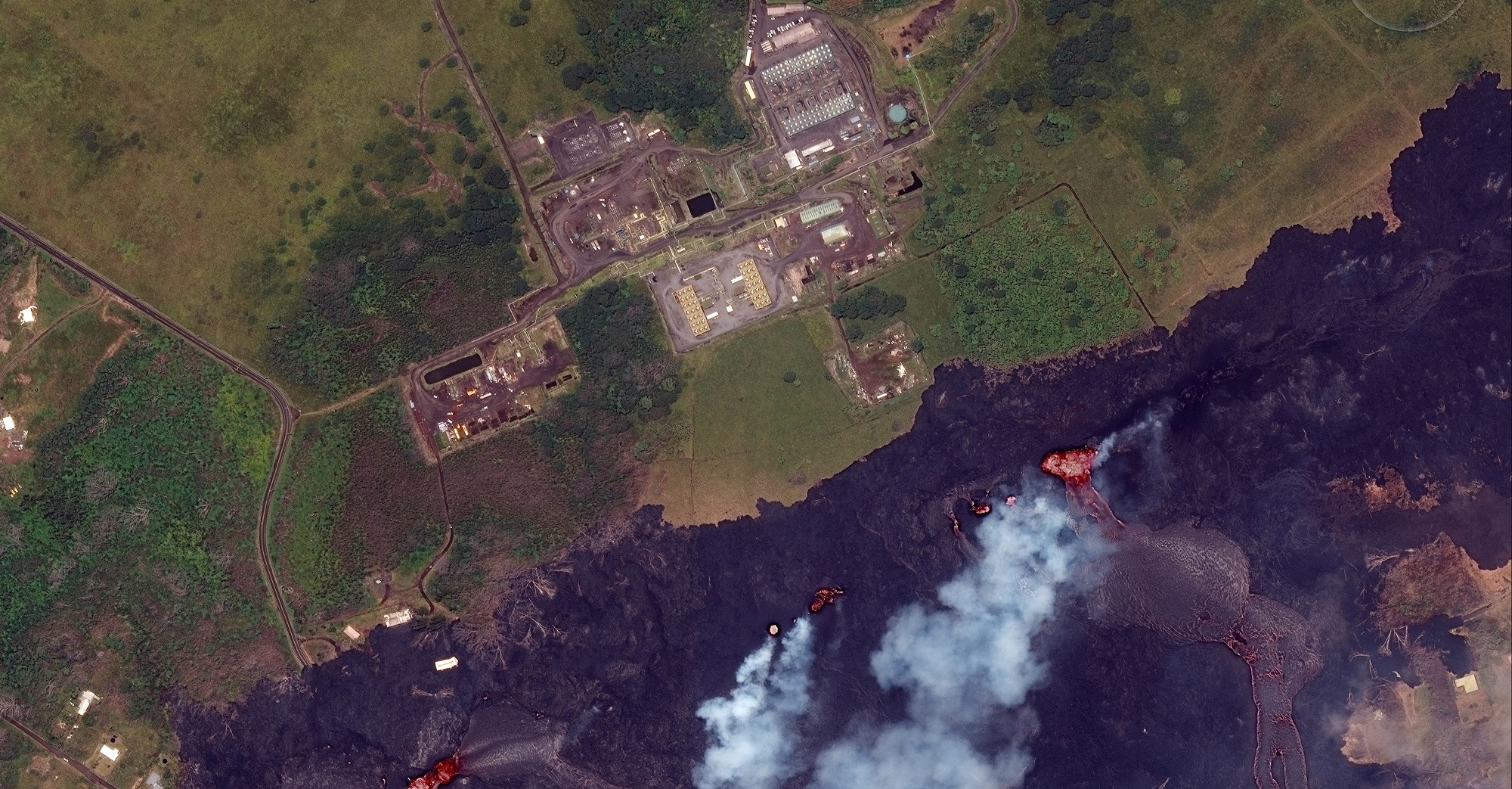
The hottest and fastest-moving lava of Kilauea volcano’s latest eruption spread across new parts of the Big Island Wednesday, forcing officials to order evacuations in two coastal neighborhoods over fears that the rapidly advancing flows could cut off dwindling escape routes. Overnight, the lava was moving fast enough to cover about six football fields an hour, according to U.S. Geological Survey scientist Wendy Stovall.
“Hawaii County Civil Defense decided to evacuate all of lower Puna to ensure that people would be able to get out,” Stovall said.
Lava gushed across and then along a roadway that leads from the commercial center of Pahoa toward smaller towns and rural farmlands to the east. About two dozen recent fissures in that area have created towering lava fountains and bone-rattling explosions throughout the eruption. The lava that is currently coming to the surface is the hottest and most fluid to date.
“This is the hottest lava that we’ve seen in this eruption, even just a matter of 50 degrees centigrade makes a big difference in how quickly lava flows can move and how they behave once the magma exits the vent,” Stovall said.
In fact, the current lava eruptions in Puna are as hot as Hawaii’s lava will ever be.
“It can’t get hotter than where we are,” Stovall added. “We are pretty much tapping mantle temperatures right now.”
One fissure was observed early Wednesday morning spouting lava over 200 feet (61 meters) into the air. Hawaii County officials said lava destroyed the electric utility’s equipment on the highway, which knocked out power to Vacationland and Kapoho Beach Lots.
“You are at risk of being isolated due to possible lava inundation,” the Hawaii County Civil Defense agency advised the public.




